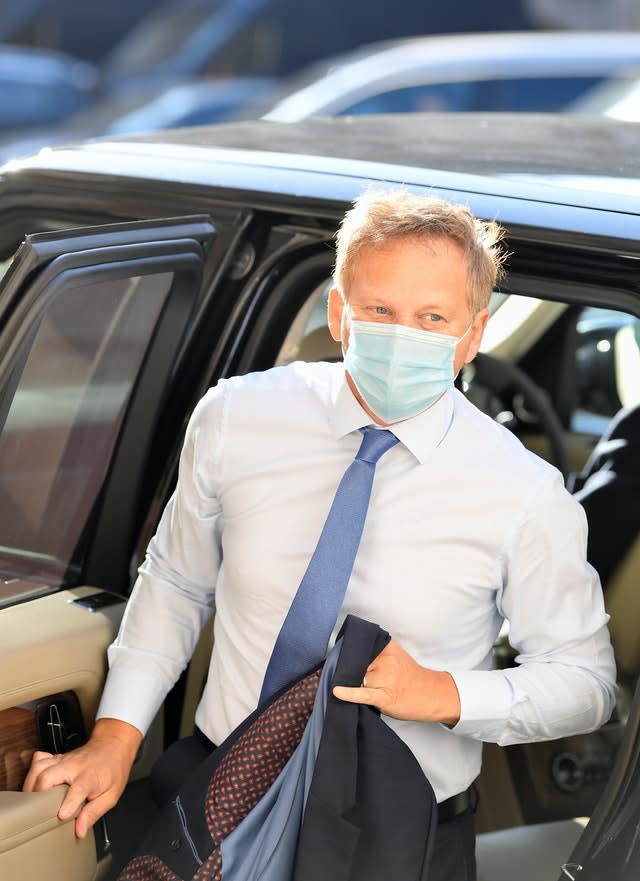Can the Government deliver on Operation Moonshot?
The multibillion-pound “Operation Moonshot”, which would see millions of UK-wide tests carried out daily, is an ambitious project by anyone’s standards.
Health Secretary Matt Hancock has talked about how he hopes people can have “a happy and loving Christmas that people yearn for”, if a vaccine is available or if the mass testing idea is realised.
But if we look at the Government’s form on delivering on testing targets, just how likely is it that they can deliver millions of daily tests in time for the festive season, or even next spring?

The Moonshot proposals come as the current testing programme faces considerable criticism for struggling to meet demand.
Many people who tried to access a test on Wednesday were met with an error message telling them to try again, and warning them not to call the helplines.
And on Tuesday, NHS Test and Trace’s director of testing apologised to people who were unable to get a test.
A briefing memo sent to the First Ministers and Cabinet secretaries in Scotland, seen by the BMJ, says that the UK-wide Moonshot programme is expected to “cost over £100 billion to deliver”.
Separate information, also seen by the BMJ, suggests this will include plans for 10 million tests to be processed each day.

On Thursday Transport Secretary Grant Shapps said that 1.2 million tests are being carried out per week at the moment, adding that there is a capacity for 300,000 per day – a far cry from a daily target of 10 million.
The Government no longer publishes daily testing figures, but the latest available figures say 175,687 tests were reported on September 2.
And, on the same date, the estimated total capacity reported by laboratories was 369,937.
There have been a number of targets with regard to testing since the pandemic took hold, which are interesting to look back on when considering the bold Operation Moonshot.
On March 25, Boris Johnson said the Government was “massively ramping up” testing and it was hoped that “very soon” 250,000 tests would be carried out each day – significantly more than the most recent published daily figure of 175,687.
On Wednesday, the Prime Minister said officials are “working hard to increase our testing capacity to 500,000 tests a day by the end of October”.
On April 2, after several days of intense scrutiny over failures in testing, Mr Hancock set a target of achieving 100,000 daily coronavirus tests in England by the end of April.
At this time, only about 10,000 tests were being carried out each day, but Mr Hancock remained confident that the target would be met.
Some 80,000 were carried out on April 29 – but it jumped by 40,000 in the final 24 hours to just over 120,000.
The Government said it met its target, with Mr Hancock heralding it as an “incredible achievement”.

He said 122,347 tests were performed in the 24 hours to 9am on Friday May 1.
But questions were raised over how the tests were counted, with changes in the last few days meaning newer home test kits were counted as they were sent out.
The overall total also included tests dispatched to “satellite testing locations” – such as hospitals that had a particularly urgent need – but did not detail whether the tests were actually used.
It meant the number of tests known to have been carried out in the 24 hours, as opposed to delivered, was 81,978.
On June 3, Mr Johnson promised to get all tests turned around within 24 hours by the end of June, “except for difficulties with postal tests or insuperable problems like that”, but this has yet to happen.
The latest figures from the Department of Health and Social Care, published on Thursday, showed that, in the week ending September 2, the 24-hour turnaround target for people receiving results after being tested at a regional site or mobile testing unit – a so-called “in-person” test – was missed again, with just 61.9% of people getting their result within that timeframe.
The data also showed that just over two-thirds (69.2%) of close contacts were reached, down slightly from 69.8% in the previous week, and once again short of the Government’s 80% target.
Then of course there is the Covid-19 contact tracing app, which has been held back by delays and currently has no release date, despite Mr Hancock originally saying it would be rolled out across England by mid-May.
Taking everything into account, it would seem quite a jump to go from the current scenario to one whereby millions of tests, which provide a result in between 20 minutes and 90 minutes, are carried out daily.
There is also the question of the technology itself, which Mr Shapps has admitted does not yet exist.
“This is technology that, to be perfectly blunt, requires further development – there isn’t a certified test in the world that does this but there are people that are working on prototypes,” he told Sky News.

 Yahoo Finance
Yahoo Finance 